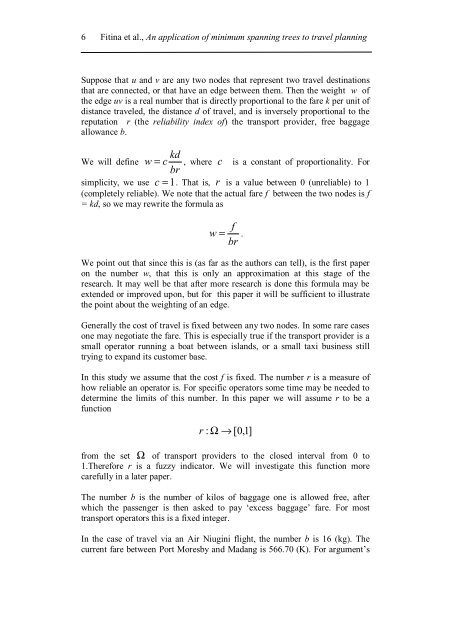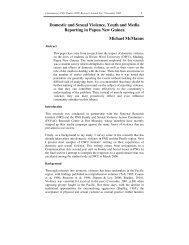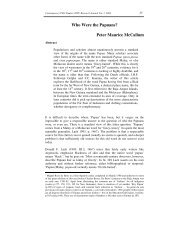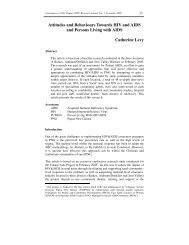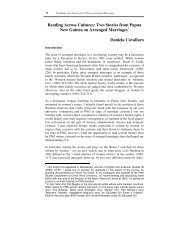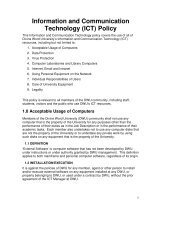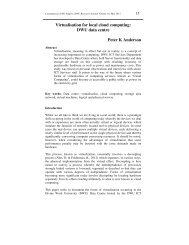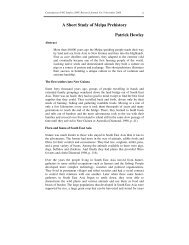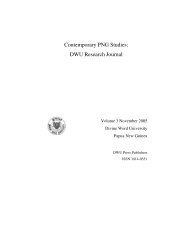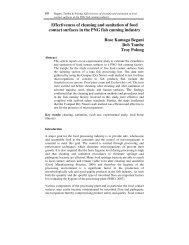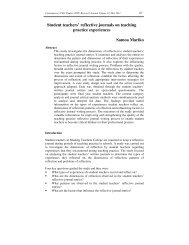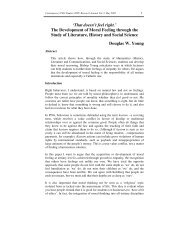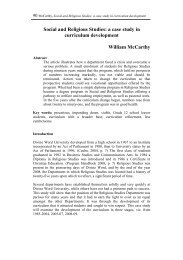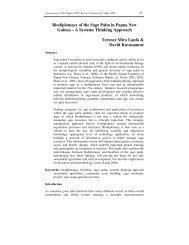An application of minimum spanning trees to travel planning - Informit
An application of minimum spanning trees to travel planning - Informit
An application of minimum spanning trees to travel planning - Informit
You also want an ePaper? Increase the reach of your titles
YUMPU automatically turns print PDFs into web optimized ePapers that Google loves.
6<br />
Fitina et al., <strong>An</strong> <strong>application</strong> <strong>of</strong> <strong>minimum</strong> <strong>spanning</strong> <strong>trees</strong> <strong>to</strong> <strong>travel</strong> <strong>planning</strong><br />
Suppose that u and v are any two nodes that represent two <strong>travel</strong> destinations<br />
that are connected, or that have an edge between them. Then the weight w <strong>of</strong><br />
the edge uv is a real number that is directly proportional <strong>to</strong> the fare k per unit <strong>of</strong><br />
distance <strong>travel</strong>ed, the distance d <strong>of</strong> <strong>travel</strong>, and is inversely proportional <strong>to</strong> the<br />
reputation r (the reliability index <strong>of</strong>) the transport provider, free baggage<br />
allowance b.<br />
kd<br />
We will define w = c , where c is a constant <strong>of</strong> proportionality. For<br />
br<br />
simplicity, we use c = 1. That is, r is a value between 0 (unreliable) <strong>to</strong> 1<br />
(completely reliable). We note that the actual fare f between the two nodes is f<br />
= kd, so we may rewrite the formula as<br />
f<br />
w = .<br />
br<br />
We point out that since this is (as far as the authors can tell), is the first paper<br />
on the number w, that this is only an approximation at this stage <strong>of</strong> the<br />
research. It may well be that after more research is done this formula may be<br />
extended or improved upon, but for this paper it will be sufficient <strong>to</strong> illustrate<br />
the point about the weighting <strong>of</strong> an edge.<br />
Generally the cost <strong>of</strong> <strong>travel</strong> is fixed between any two nodes. In some rare cases<br />
one may negotiate the fare. This is especially true if the transport provider is a<br />
small opera<strong>to</strong>r running a boat between islands, or a small taxi business still<br />
trying <strong>to</strong> expand its cus<strong>to</strong>mer base.<br />
In this study we assume that the cost f is fixed. The number r is a measure <strong>of</strong><br />
how reliable an opera<strong>to</strong>r is. For specific opera<strong>to</strong>rs some time may be needed <strong>to</strong><br />
determine the limits <strong>of</strong> this number. In this paper we will assume r <strong>to</strong> be a<br />
function<br />
r<br />
: Ω → [0,1]<br />
from the set Ω <strong>of</strong> transport providers <strong>to</strong> the closed interval from 0 <strong>to</strong><br />
1.Therefore r is a fuzzy indica<strong>to</strong>r. We will investigate this function more<br />
carefully in a later paper.<br />
The number b is the number <strong>of</strong> kilos <strong>of</strong> baggage one is allowed free, after<br />
which the passenger is then asked <strong>to</strong> pay ‘excess baggage’ fare. For most<br />
transport opera<strong>to</strong>rs this is a fixed integer.<br />
In the case <strong>of</strong> <strong>travel</strong> via an Air Niugini flight, the number b is 16 (kg). The<br />
current fare between Port Moresby and Madang is 566.70 (K). For argument’s


